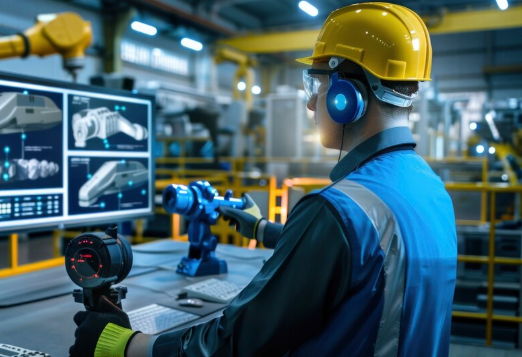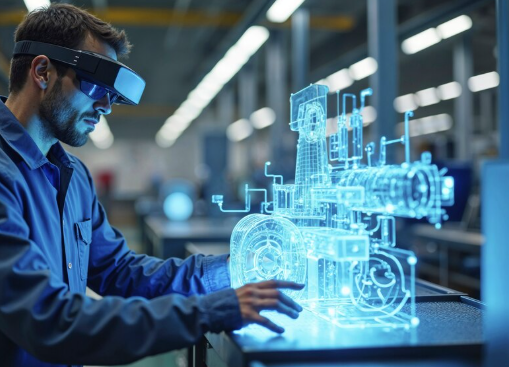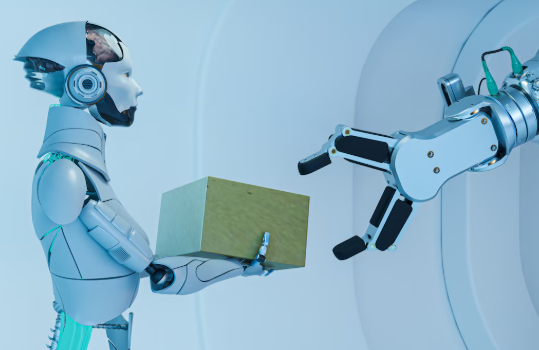The healthcare sector in India is going through a revolutionary period that has seen the application of technology cease being an auxiliary part and becoming a lifeline of patient-oriented care. One of the most disruptive augmented reality (AR), virtual reality (VR), and extended reality (XR), is revolutionizing medical professional diagnosis, treatment, and interaction with patients. These technologies are changing the manner in which healthcare is provided to the country, be it through immersive training or remote surgery support.
Statista states that the AR/VR healthcare market will reach more than 12.2 billion U.S. dollars worldwide by 2031, and Asia-Pacific, and India in particular, will be one of the key contributors to this increase. In the case of a country with both an urban-rural healthcare disparity problem and a shortage of qualified specialists, AR VR healthcare can provide new opportunities to access more people, save money, and achieve better outcomes of treatments.
STL Digital is contributing to the rapid change by allowing healthcare providers to embrace AR, VR, and XR technologies with customized digital solutions, which will be more accessible, efficient, and impactful to patients in the healthcare ecosystem of India.
The Promise of AR VR Healthcare in India
AR and VR are changing the frontiers of healthcare in the present day. Surgeons are now able to view important information that is in their field of view, which enhances accuracy and confidence in the complex surgery. Virtual reality provides risk-free interactive environments where medical students and doctors can practice and sharpen their skills. As the compounded systems, these technologies offer end-to-end solutions by turning healthcare into a more interactive, data-driven and patient-centered experience.
This change is not an idle dream, but it is taking place throughout India. AR, VR, and XR are beyond pilot projects and are making their way into the real world, which is transforming care delivery:
Applications in India:
Medical Education and Training: The lack of skilled professionals is one of the largest healthcare problems in India. FICCI and KPMG report state that the density of health professionals per 10,000 population in India (33.5) is lower than the WHO-recommended one.
This shortcoming is directly satisfied by virtual reality, which allows surgical simulation, which allows the doctor and the student to practice intricate surgeries as many times as possible in a 100 percent safe setting, accelerating the generation of job-competent staff.
Surgical Assistance → Surgeons who have AR headsets are able to see 3D models of patient anatomy in real time, increasing accuracy and confidence in the operating room.
Rehabilitation Therapy, Patients recovering after strokes or trauma can also use VR-based exercises to increase the interest in the therapy process and speed up the recovery.
Telemedicine: Rural Outreach → XR-powered online clinics can enable specialists in metro hospitals to share their experience with underserved rural areas in India and close the healthcare access gap.
Key benefits of AR VR Healthcare
Improved Customer Feeling of Digital Experiences: In VR, patients will have the opportunity to practice their treatment plans, visualize complicated procedures, and become more involved in their care. This creates trust and increases adherence to treatment.
Next-Level Medical Training: VR simulations enable medical professionals and medical students to experience the simulation of surgery in a safe and controlled setting many times.
Surgical Accuracy and Safety.
Real-time data & analytics on the anatomy is provided by AR in the course of operations, which is accurate. Such an application of AR VR healthcare is already piloted in India in the field of neurosurgery and orthopedics.
Distant and Rural Health Access: XR allows the specialists to remotely collaborate with the rural doctors, thereby minimizing travel and enhancing the quality of care.
Transforming Healthcare by Going Digital
AR/VR/XR is not only enhancing care delivery but changing business models of healthcare. Patient-centered healthcare providers and hospitals are shifting their models towards reactive care rather than proactive care.
The investments in complementary technologies are accelerating this digital transformation in business. The KPMG Future of Healthcare Technology report found that healthcare organizations are more and more investing in digital capabilities with constraints in workforce skills shortage, security, and regulatory complexity. 70 percent of healthcare leaders said they were pleased with the value of their technology investments, which demonstrates that investment in technology is bringing tangible returns.
New technologies such as digital twins to support the design of personalized treatment, AI application in business with XR to detect diseases early and develop personalized courses of care are other technologies. Pharmaceutical firms are using VR to conduct virtual clinical trials and this saves on costs and enhances accuracy of data. Such profound integration of these immersive technologies into the fundamental clinical systems forms a continuous cycle of data that streamlines all points of contact in the patient experience. In addition, the capability to roll out modified training modules at the world scale quickly through VR solutions also guarantees uniformity of care standards on the expansive geographical networks, which India as a nation needs. This combination of real-time data, predictive analytics and immersive training is the future as it transforms the complicated data to effective clinical action that can be taken to achieve both efficiency and a better patient result.
AR VR Healthcare Scaling Problems.
Infrastructure gaps: Most areas in India still have poor connectivity and low-end hardware.
Implementation Cost: VR devices, AR surgery equipment and XR systems require a large investment.
Data Privacy and Security: Healthcare data is very sensitive.
Change Management: Doctors and other individuals involved need to be trained to completely embrace and incorporate XR into their operations.
To break these hurdles, businesses should invest in a robust infrastructure, governance and adoption strategies that will enable AR VR healthcare to be scaled to India.
The role of STL Digital in Transforming the Healthcare
We collaborate with Life Sciences and Healthcare venture enterprises to transform infrastructure and deliver innovative and patient-centric solutions. We help businesses work together, act swiftly and continually through our next-gen digital technology services to deliver new healthcare solutions to life. Below is the way our products fit the AR VR healthcare revolution:
STL Digital Life Science: To discover drugs and research patients with immersive AR/VR technology.
Laboratory Modernization: Designing XR-based digital labs that are quicker, safer, and less expensive to run.
Digital Clinic: The extension of healthcare accessibility via XR-enabled telemedicine.
Digital Health: The future of personalized and immersive patient experiences driven by data and digital twins.
Value Based Care: use AR/VR to create patient-centered treatment designs aimed at improving patient results and not processes.
Digital Twin: Predicting patient treatment and improving treatment outcomes with simulations tailored to the patient.
Digital Robotic Surgery: Enabling AR directed robotic surgeries to provide precision and minimally invasive surgeries.
Such services not only allow innovation but also provide compliance, security, and cost-effectiveness, which are essential in healthcare enterprises that are going through the digital transformation.
A Road Ahead: To a Patient-Centric Healthcare Ecosystem.
The future of AR VR medical care in India is closely connected with the creation of a patient-centric ecosystem, which is digital first. AR, VR, and XR will cease being pilots and move to the mainstream as healthcare providers, policymakers, and enterprises work together on infrastructure and adoption.
- Patients will have access to immersive and personalized care.
- Health care practitioners will obtain superior equipment to train, work, and coordinate effectively.
- The digital transformation of business in Healthcare Enterprises will result in the discovery of new efficiencies and value creation models.
India will become the world leader in the sphere of AR VR healthcare innovation with the help of the government initiative, individual investment, and technologic partners.
Conclusion
AR, VR, and XR ceased to be futuristic and are nowadays the transformation enablers in healthcare in India. They have the ability to fill the rural-urban healthcare divide, improve the precision of medicine, and reshape patient engagement. But to make a difference, there must be more than technology, it must have a strategy, governance, and scale.
At STL Digital we are assisting healthcare organizations to convert these innovations into measurable outcomes. We apply immersive technologies to our main services so that we can help enterprises provide secure, personalized, and future-ready care.
With India moving into its healthcare future at an increased pace, AR VR healthcare will not only change the systems but also make the entire culture of care more accessible, affordable, and human-centered.



